Crypto Cravings: How Singapore’s F&B Scene is Experimenting With NFTs
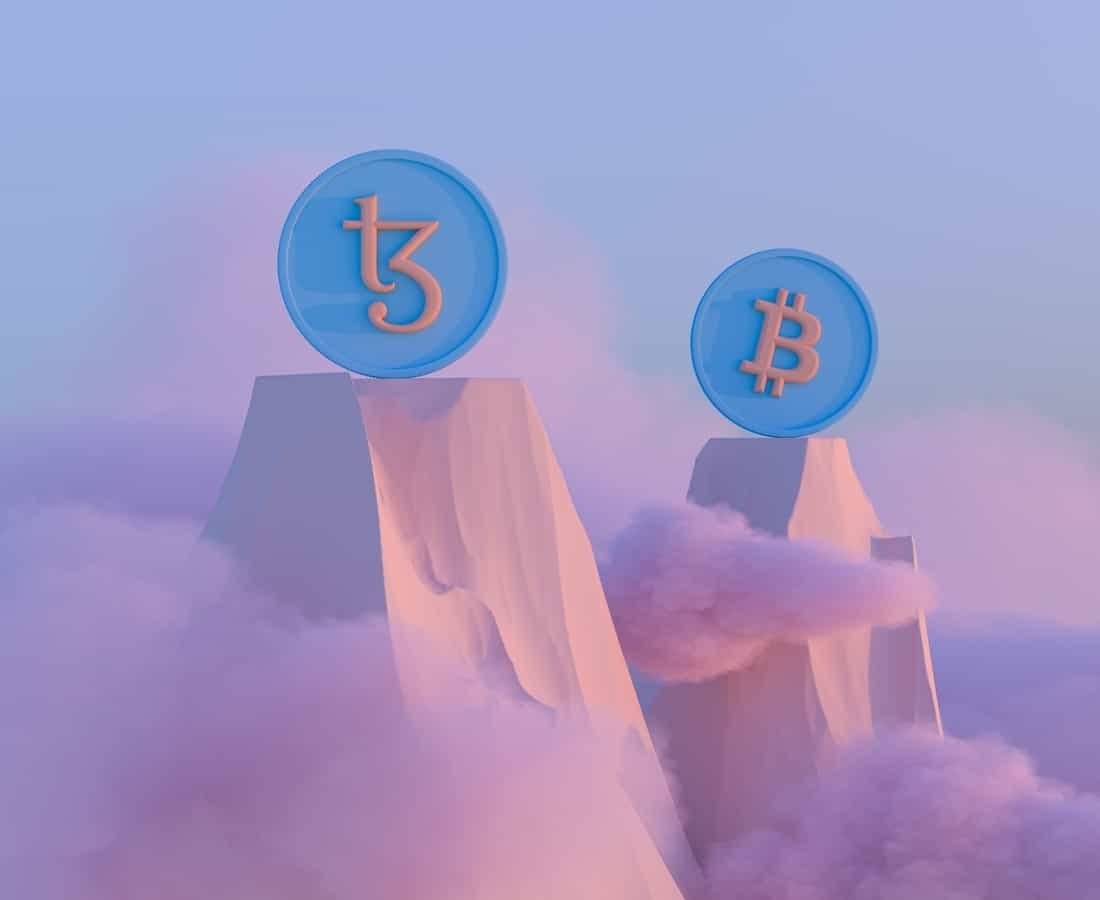
PUBLISHED March 29th, 2022 10:00 am | UPDATED July 22nd, 2024 05:26 pm
Generative pizza art. Blockchain burratas. A seafood restaurant open only to NFT holders. From fine dining to fast food, the NFT craze has sunk its teeth into the F&B world in the past year. What first seemed like a tech fad run amok has transformed into a movement poised to shake up many industries – and Singapore’s brands haven’t been slow to take the cue.
Even if you’ve been living under a rock, you’re unlikely to have escaped hearing about NFTs (aka non-fungible tokens). On a basic level, they’re crypto assets on the blockchain with unique digital signatures, making it impossible to replicate an NFT or exchange it directly with another.
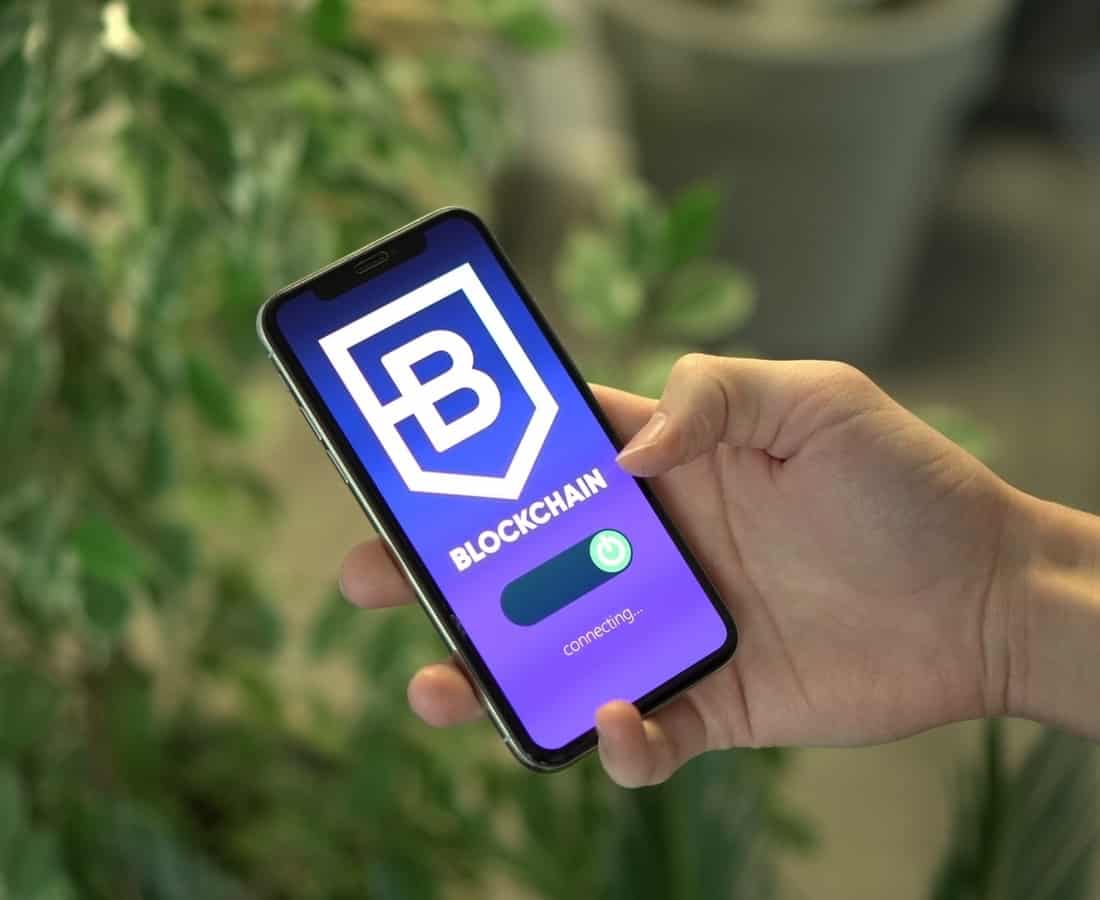
Most NFTs today represent ownership of an asset in the virtual realm – digital art, in-game items, even recipes. But it’s also possible to mint NFTs linked to real-world objects, wherein the token acts as a digital ‘receipt’ of ownership and authenticity.
The fun really starts when food and drink enter the game. There’s no doubt that eating and drinking are irreducibly physical pleasures – which makes it strange to think about F&B NFTs. A handful of local brands, however, are using NFTs to spice up the epicurean experience, by tapping into their exclusivity and artistic potential. From whisky to ice-cream, here’s a look at the F&B brands breaking new ground on NFTs in Singapore.
Savouring Whisky Phygitally with Mighty Cask
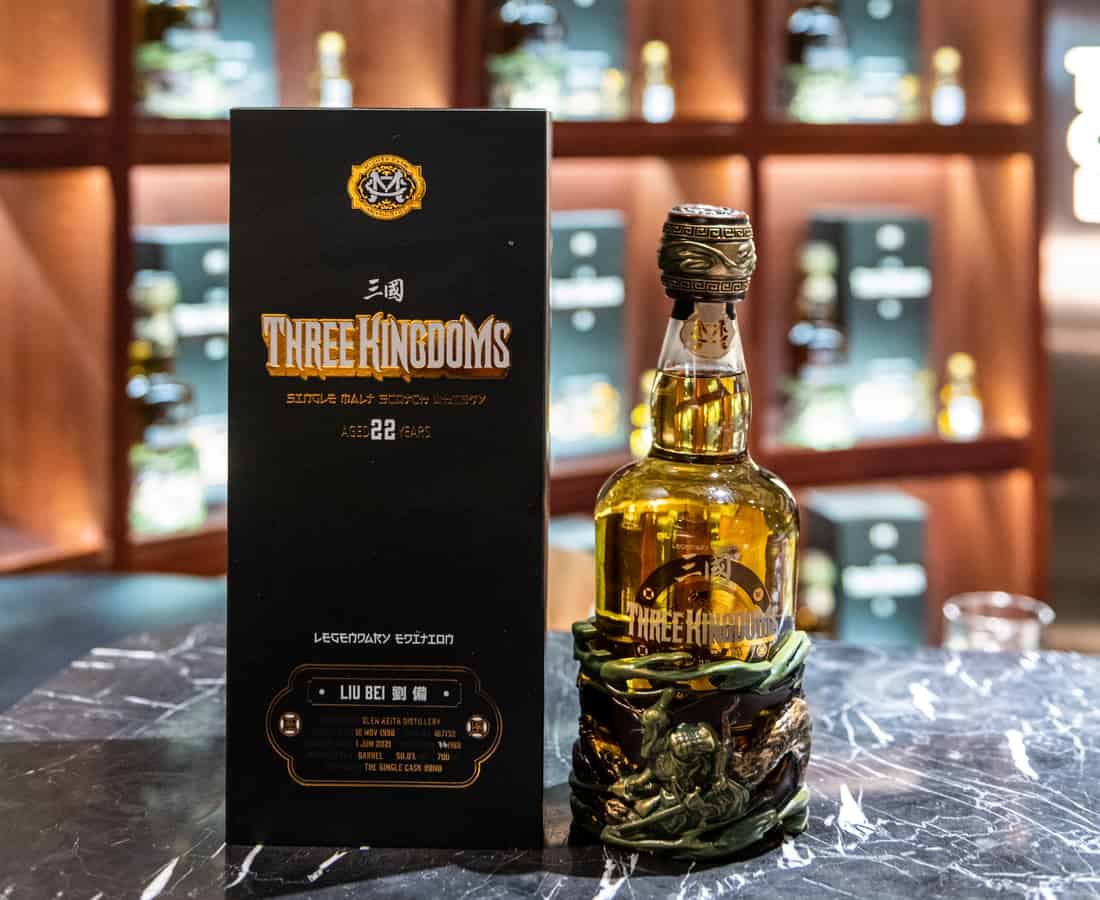
The whisky world has seen an outpouring of NFTs in the past few months, and the newest kid on the blockchain is Mighty Cask. A homegrown collab between whisky bar The Chambers by Cask and local collectibles studio Mighty Jaxx, Mighty Cask’s first collection is a limited-edition trio of single malts: a 20-year-old Caperdonich, a 22-year-old Glen Keith, and a 23-year-old Glen Grant.
Retailing at a launch price of S$4,888, the set of whiskies come in uniquely sculpted bottles inspired by the Chinese epic Romance of the Three Kingdoms. Each striking collectible is modelled after one of the three legendary heroes – Guan Yu, Liu Bei, and Zhang Fei – capturing their figures in a stylised battle stance. Only 330 sets are currently available for sale, and we’re told they’re moving fast.
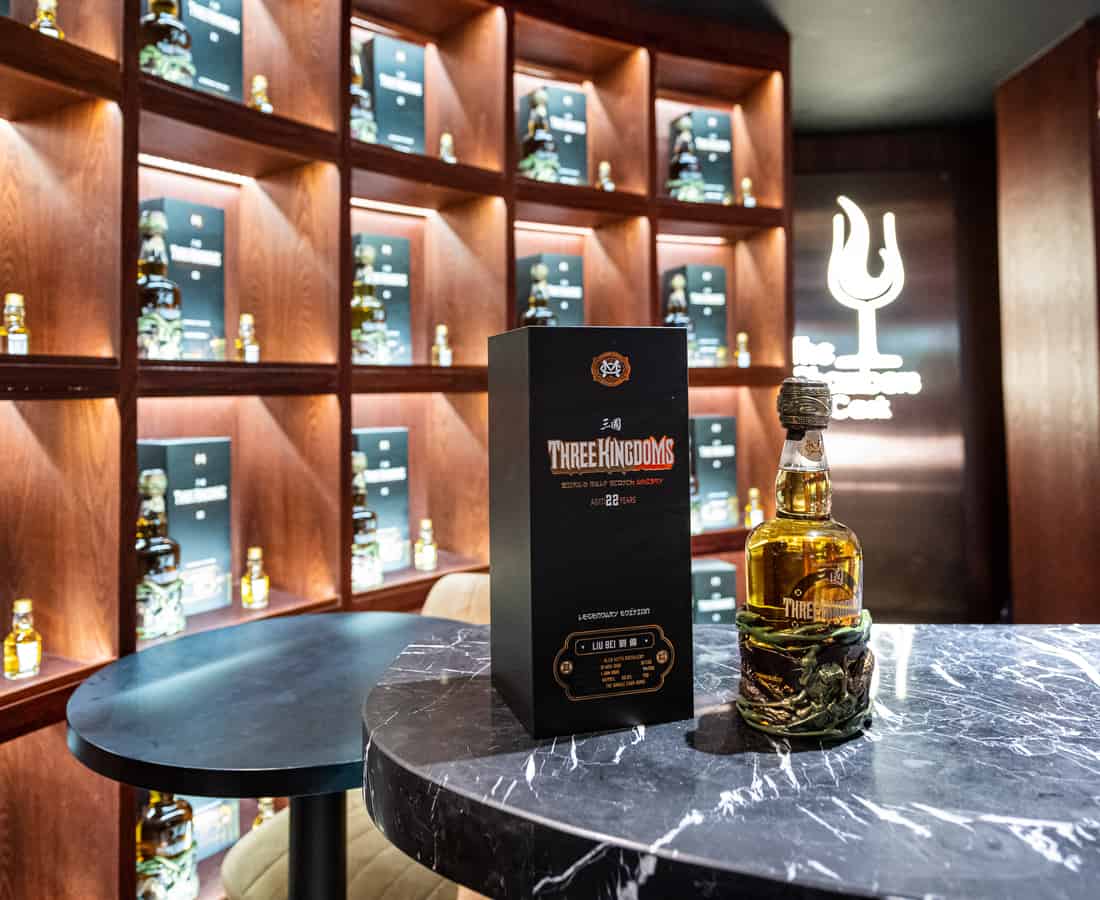
So where do NFTs come in? Folks who purchase a set can go on to mint NFT versions of each bottle design on Mighty Jaxx’s mobile app. At the moment, these NFTs can’t be transferred beyond the app – though you can screenshot them to flaunt them on your socials if you like. The first 138 NFT holders will also be able to snag a miniature series of the Mighty Cask collection at S$188.
NFTs have been making waves in whisky – just last October, Scotch giant Glenfiddich launched a series of 15 NFTs, each representing ownership of an ultra-rare 46-year-old single malt. Matured in an Armagnac cask, this luxe Scotch was snapped up in seconds to the tune of USD18,000 a bottle. Following hot on its heels, The Dalmore digitized and sold its Decades No. 4 Collection as an NFT with an eye-watering USD137,700 price tag.

Notably, these whisky NFTs have one key difference from Mighty Cask – they’re tailored to the investor as much as the connoisseur. Purchasing the NFT gives you ownership of the bottle, but your Scotch remains securely stored by the distillery or the NFT platform. You can hold on to your investment to let its value appreciate, before reselling and turning a profit. Or you can choose to get your bottle shipped to you, drink the whisky, and ‘burn’ your token – an NFT jargon which means removing your token from the marketplace permanently.
Mighty Cask’s model is somewhat different, in the sense that you can own your NFT and savour your Scotch too. Its focus lies less in trading than the artistic experience it offers – physical, digital, and epicurean. “Mighty Cask expresses this beloved golden spirit as a unique and collectable art form, while extending that spirit into the digital space,” explains David Lau of The Chambers by Cask. At the very least, you’re guaranteed some eye-catching drinking companions with your dram.
Putting A Cutting Edge on Craft Beer Creativity
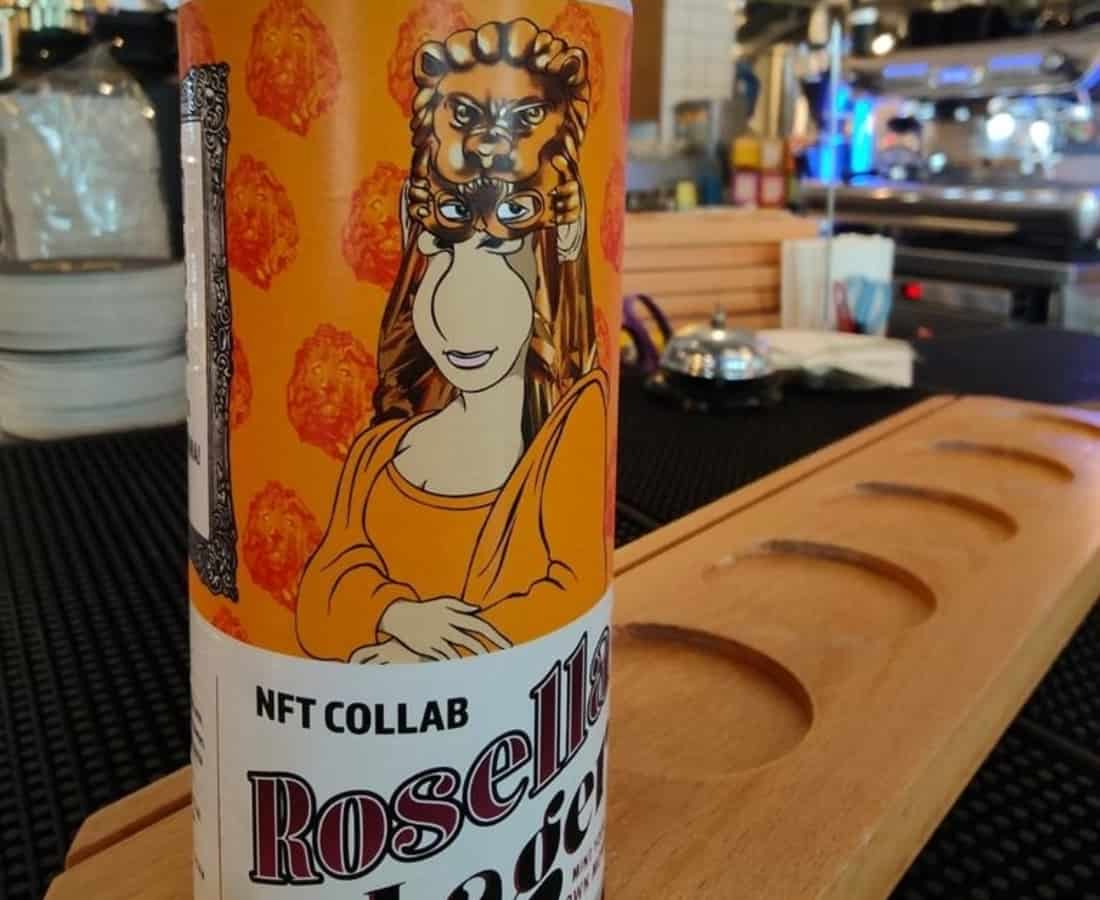
Craft beer and NFTs might sound like strange bedfellows, but there’re parallels to be drawn between them. For one, the craft beer world is no stranger to hype around small-batch special releases, with some aficionados even trading them – much the same way fanfare builds around a coveted NFT drop. For another, the craft beer movement has turned the humble can into a work of art. Today’s can labels are fun, eccentric, collectible – adjectives that might well describe a lot of NFT art on the market.
“There’re quite a few similarities between what craft beers are trying to do, and what NFTs are trying to achieve,” says Will Julius, co-founder of Lion Brewery Co. “I think both occupy a space that’s growing, and that inspires creativity and experimentation.”
Such musings were the spark behind the NFT Rosella Collaboration Lager, Singapore’s first craft beer-NFT collab. Released earlier this March, the limited-time lager is the joint lovechild of Lion Brewery Co. and the Singapore-based artists behind the Hola Mona NFT collection – a set of 1,503 generated NFTs on the Solana blockchain. For the uninitiated, imagine parodic portraits of the Mona Lisa as a cartoon ape, each decked out in a unique combination of headgear, robe design, and body art.

Tinged with local flavours like jasmine tea leaves and rosella, the lager was designed to “ground the Hola Mona NFT with something that would engage all the physical senses”. In a nod to the creative process of the Hola Mona NFT – where an iconic artwork was transformed into a thousand digital variations – the Lion Brewery folks took the popular beer style of lager and gave it a floral, aptly feminine twist. They then decked the 500ml cans in an exclusive label design: a Hola Mona-style portrait crowned with a funky lion mask.
Right now, the label isn’t an NFT in itself – rather, it’s a sort of physical spin-off from the digital art. “We designed it with the notion of a collector’s item in mind,” shares Will. Rather than hopping on the NFT bandwagon, the lager’s achievement lies in drawing on NFTs to push the envelope on craft beer trends. Still, Will adds, “we’re mulling over the idea of selling that label as an NFT as well, since it’s certainly one-of-a-kind. If only we could sell our beers for the price that some NFTs go for!”
Creating Community with Ice-Cream NFTs

It’s clear that NFTs have fast evolved beyond mere buying and trading – they’re luxe status symbols, markers of identity, tokens of belonging to an exclusive community. And for forward-thinking brands today, NFTs are the key to taking membership experiences to the next level. Just ask artisanal ice-cream maker The Ice Cream & Cookie Co (ICC), which is set to launch its very own app with NFT integrations this June.
Over the last decade, ICC has won a following for their ice-cream cookie sandwiches and locally inspired pints (think chendol and bubble milk tea). In celebration of their big 1-0 this year, the brand has big plans: getting Halal-certified, expanding across Southeast Asia, and rolling out a seamless shopping experience via the ICC app. Most intriguingly, the app will feature an NFT-based membership system with real-world perks (read: ice-cream treats).
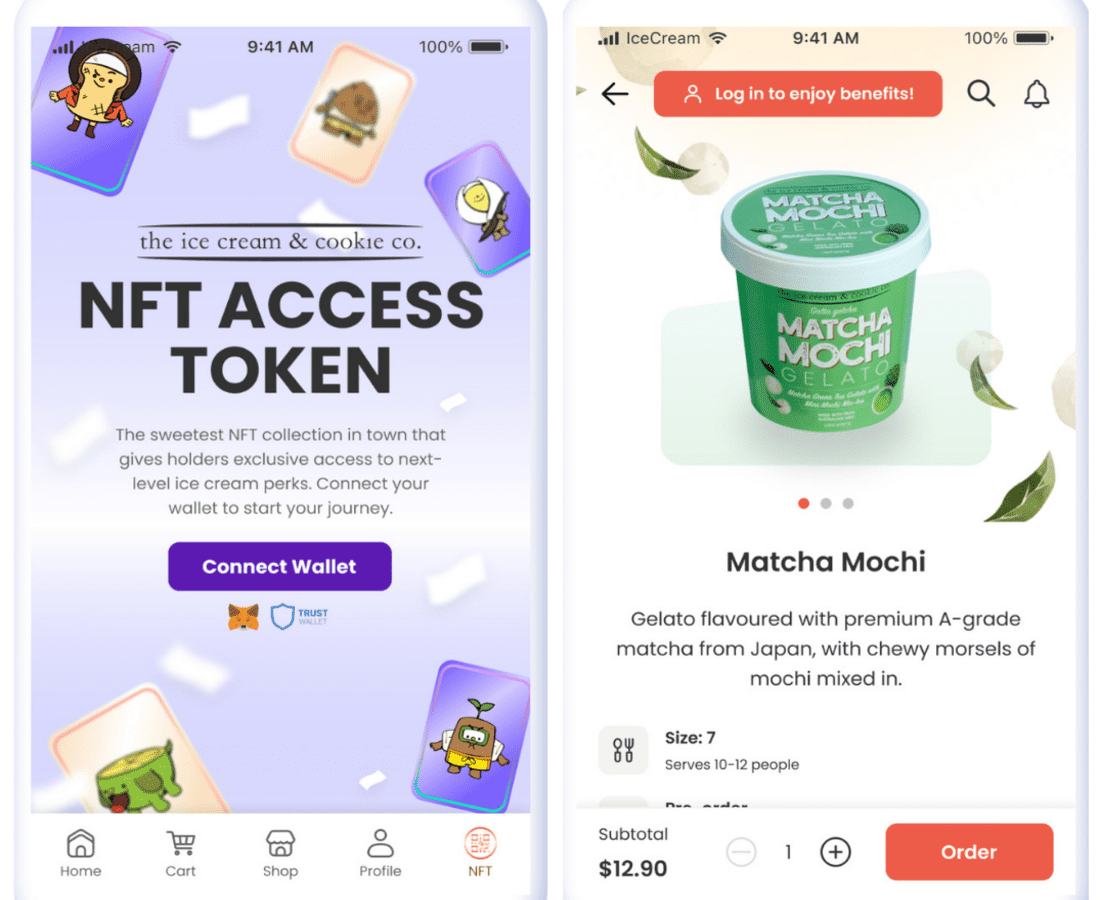
The mechanism is simple: by scanning a code on a purchase, you can mint an ICC NFT dubbed ‘Ingredient’. These Ingredient NFTs take the form of an adorable series of illustrated characters, based on ice-cream ingredients like milk, cream, sugar, and pandan. The ultimate goal is to collect all the fixings needed to ‘make’ your own ice-cream, in order to create your own NFT of an ICC pint. App users can even sell, trade, or give their ingredient NFTs – it’s curiously reminiscent of trading cards.
What really sweetens the deal, of course, is the real-world rewards that NFT holders will get. ICC plans to deliver exclusive sweet surprises like ice-cream drops and ice-cream cakes for members, with a continuously rotating lineup to keep things fresh.
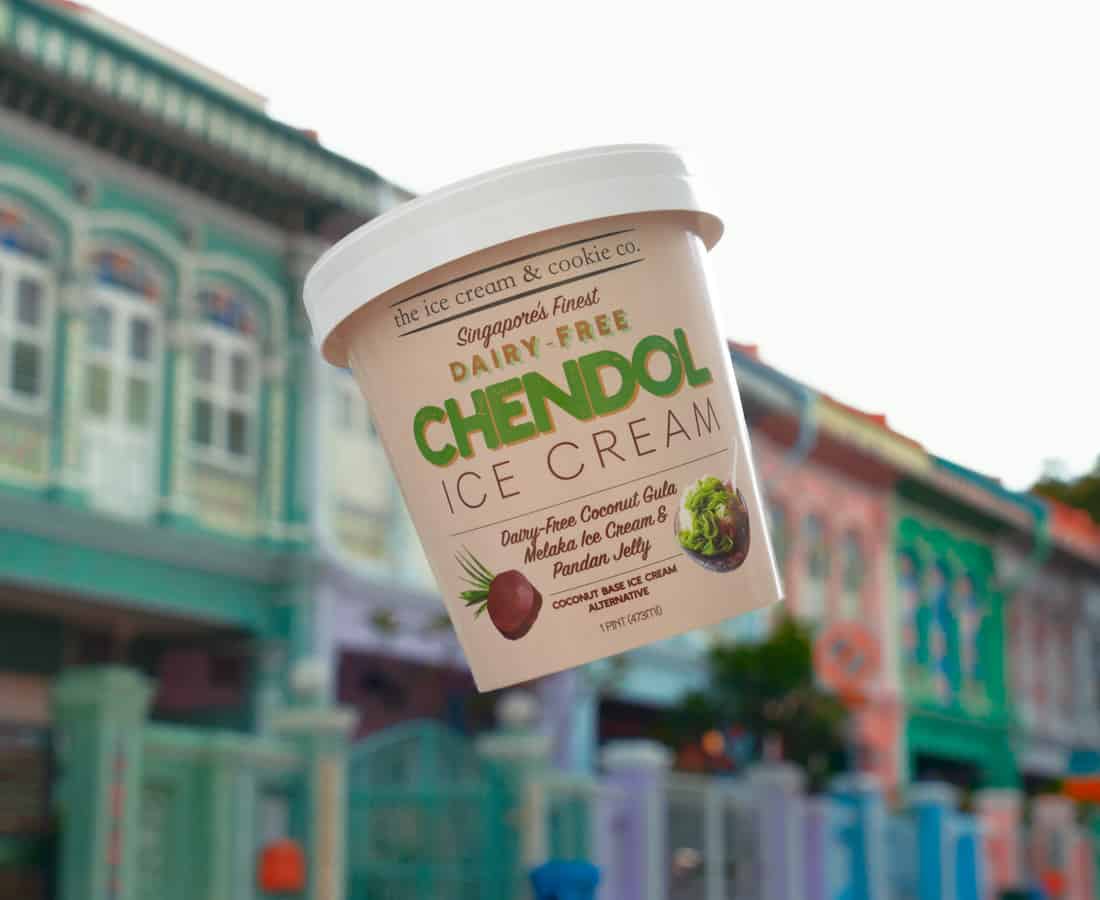
“We believe NFT access tokens are the next generation of memberships, and that eventually traditional membership platforms will move toward this,” says Natasha Chiam, founder of ICC. “When we came up with the ICC app, we thought: why not include NFTs as a way to connect our community? Sharing, trading, and selling NFTs create a level of engagement that traditional membership models lack. More than just people eating ice-creams, we want ICC lovers to be a community.”
For now, it looks like NFTs will be on the menu for a while. What looked like a brief flirtation between F&B brands and the sexy new crypto craze might just turn into something deeper, given the creative and community-building value that NFTs bring to the table. What remains to be seen is whether consumers are just as hungry for this trend.
